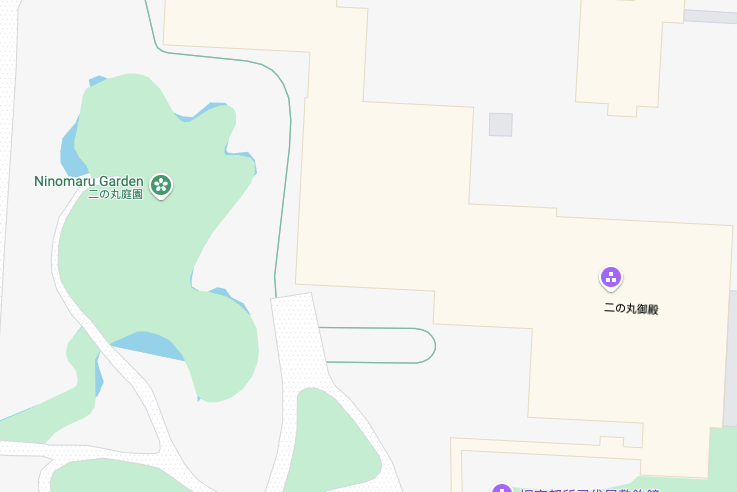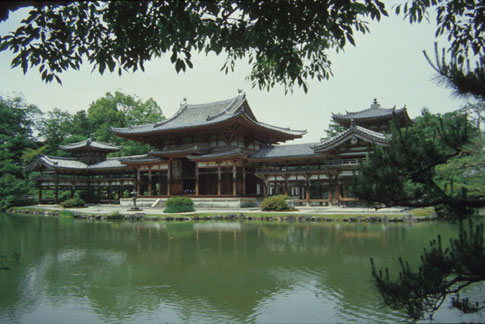
Nijo Castle was built in the early seventeenth century as a temporary Kyoto residence for the first Tokugawa Shogun. Its most famous garden is the one adjoining the Ninomaru Palace. Attributed to Kobori Enshu, it consists of a pond with three islands connected to the shore by bridges, the islands evoking Mt. Horai, the crane, and the turtle. Its large number of rocks has led some critics to view the garden as typical of the somewhat excessive designs of the Edo Period. Choose a view point from the map or click Tour the Garden for more views of this garden.
Tokugawa Ieyasu, the first Shogun of the Edo Period, began building Nijo Castle and its Ninomaru Palace in 1603, using it as his temporary residence on his visits to Kyoto. Ninomaru was rebuilt in the 1620's, and the whole complex remained in the possession of the shogunate until 1867, when it was turned over to the Imperial family. It acquired its current name (Nijo-jo) when it was acquired by the city of Kyoto in 1939. Although there are a number of gardens within the castle walls, the most famous is the Ninomaru Garden that runs along the western flank of Ninomaru Palace. Attributed to Kobori Enshu (1579-1647), this one-acre garden consists of a relatively modest pond with three islands that are said to represent Horai-jima (Isle of the Blest), Tsurushima (Crane Island), and Kameshima (Turtle Island). As is almost always the case, however, these identifications postdate the building of the garden. Slab bridges connect two of the islands with the shore, and the pond is fed by a two-tiered waterfall on the northwest corner of the pond. The garden is famous for the large number of rocks used in its construction, an extravagance that strikes some critics as typical of the ostentatious tendencies of the Momoyama and early Tokugawa Shoguns. Some of the rocks may have been "borrowed" from the garden of Hideyoshi's Juraku-dai, located just to the north of Nijo, and may have been placed here before Kobori Enshu worked on the garden (it is assumed that Enshu expanded the garden in 1626 in anticipation of an Imperial visit). It may also contain elements taken from the Shinsenen Garden located to the north of the castle. Over the course of its history, the pond has sometimes been allowed to go dry, leading some authorities to wonder whether it was intended to be a dry garden from the outset.

